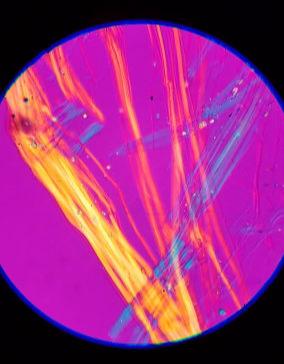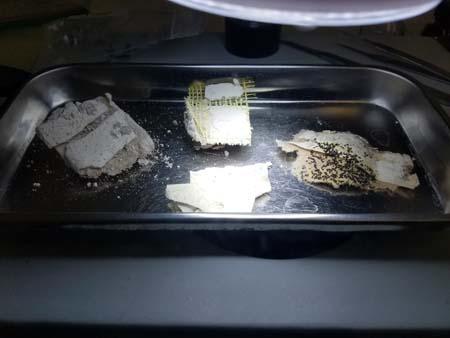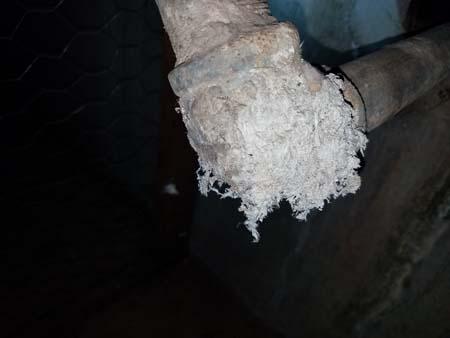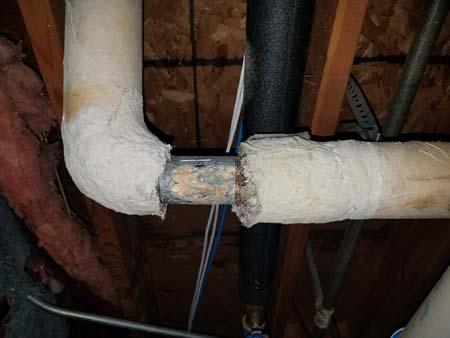ASBESTOS LABORATORY SERVICES
Few things have the potential to impact rising property values, leasing opportunities, or building renovations like the discovery of asbestos. Asbestos was a valuable reinforcing, insulating, and fire-proofing material, and was used widely in construction materials. Loose fill attic insulation known as vermiculite are also a concern as it may contain small amounts of asbestos fibers. Testing of building materials and vermiculite is the only way to determine if they contain asbestos fibers.
Asbestos testing is the responsibility of anyone who launches a renovation, demolition, or maintenance project that results in structural disturbance. L&R can conduct a thorough analysis of any suspect material in our laboratory in Meridian, Idaho.
Turnaround Times
Rush and regular turnaround times are available to fit your budget and project needs. Regular turnaround samples are issued within 3-5 business days while rush turnaround samples are provided within 3-hours or 24-hours depending on your requirements. Written reports are provided in PDF by email once analysis is complete. Each report provides a description of the methodology used in the analysis and the acceptable asbestos ranges by province on the cover page followed by the analytical data presented in a table of results.
Accreditation & Qualifications
Our asbestos laboratory participates in the Bulk Asbestos Proficiency Analytical Testing Program (BAPAT), which is a proficiency testing program provided by the American Industrial Hygiene Association Proficiency Analytical Testing Programs, LLC (AIHA PAT Programs, LLC), that serves as an external quality assurance program for laboratories analyzing bulk building materials by polarized light microscopy (PLM). It is designed to provide bulk audit samples on a quarterly basis, and to provide a means by which a laboratory can evaluate its ability to characterize bulk materials. The program is both qualitative and semiquantitative in nature.
In addition, our analysts have been trained at the McCrone Research Institute in Chicago – the world’s preeminent leader in microscopy education and research.
All of this provides an assurance of accurate and legally defensible analysis for clients, building owners, and laboratories.
ASBESTOS TESTING
L&R has trained and experienced staff along with the necessary instrumentation to provide quality asbestos analysis. We offer analysis in the following mediums:
• Air
• Bulk Building Materials
• Settled Dust
• Other Non-Building Materials
• Soil, Sediment, and Vermiculite
• Water and Other Aqueous Samples
We offer various methodologies (NIOSH, EPA, OSHA, ASTM, etc.) utilizing Phase Contrast Microscopy (PCM) and Polarized Light Microscopy (PLM). .


Asbestos is a group of six naturally occurring fibrous silicate minerals. The six forms of asbestos are: Actinolite, Amosite, Anthophyllite, Chrysotile, Crocidolite, and Tremolite. Asbestos fibers are strong and flexible enough to be spun and woven. They are heat and chemical resistant, making them useful for many industrial purposes. Due to these properties asbestos has been used in over 3,000 different products. Asbestos was a valuable reinforcing, insulating, and fire-proofing material, and was used widely in construction materials.
Asbestos is commonly found in older homes and buildings within the following materials:
• pipe and furnace insulation
• roofing materials
• exterior siding
• wallboard and textures/joint compound
• textured paints and other coatings
• flooring materials and adhesives
• loose attic insulation, known as vermiculite
While many asbestos-containing materials have been banned in the United States, it continues to be used today making it necessary to test modern buildings for the presence of asbestos. Testing of building materials and vermiculite is the only way to determine if the materials contain asbestos fibers. It is the responsibility of anyone who launches a renovation, demolition, or maintenance project that results in structural disturbance. The following are some of the materials in which the use of asbestos is not banned:
Determine if the materials contain asbestos fibers. It is the responsibility of anyone who launches a renovation, demolition, or maintenance project that results in structural disturbance. The following are some of the materials in which the use of asbestos is not banned:
• Vinyl floor tile
• Roofing felt
• Roof coatings
• Non-roofing coatings
• Millboard
• Cement shingle
• Cement pipe
• Cement corrugated sheet
• Cement flat sheet
• Pipeline wrap
• Automatic transmission components
• Clutch facings
• Friction materials
• Disk brake pads
• Drum brake linings
• Brake blocks
• Gaskets
• Clothing


If asbestos-containing materials are disturbed by cutting, sanding or other remodeling activities, asbestos fibers can be released to the air where they can become an inhalation hazard. To be a significant health concern, asbestos fibers must be inhaled at high concentrations over an extended timeframe. Significant exposure to asbestos increases the risk of asbestosis or mesothelioma.
Asbestosis is scarring of the lung tissue. It restricts breathing leading to decreased lung volume and increased resistance in the airways. It is a slowly progressive disease with a latency period of 15 to 30 years.
Mesothelioma is a cancer of the pleural lining and is considered to be exclusively related to asbestos exposure. By the time it is diagnosed, it is almost always fatal. Mesothelioma has a longer latency period of 30 to 40 years.